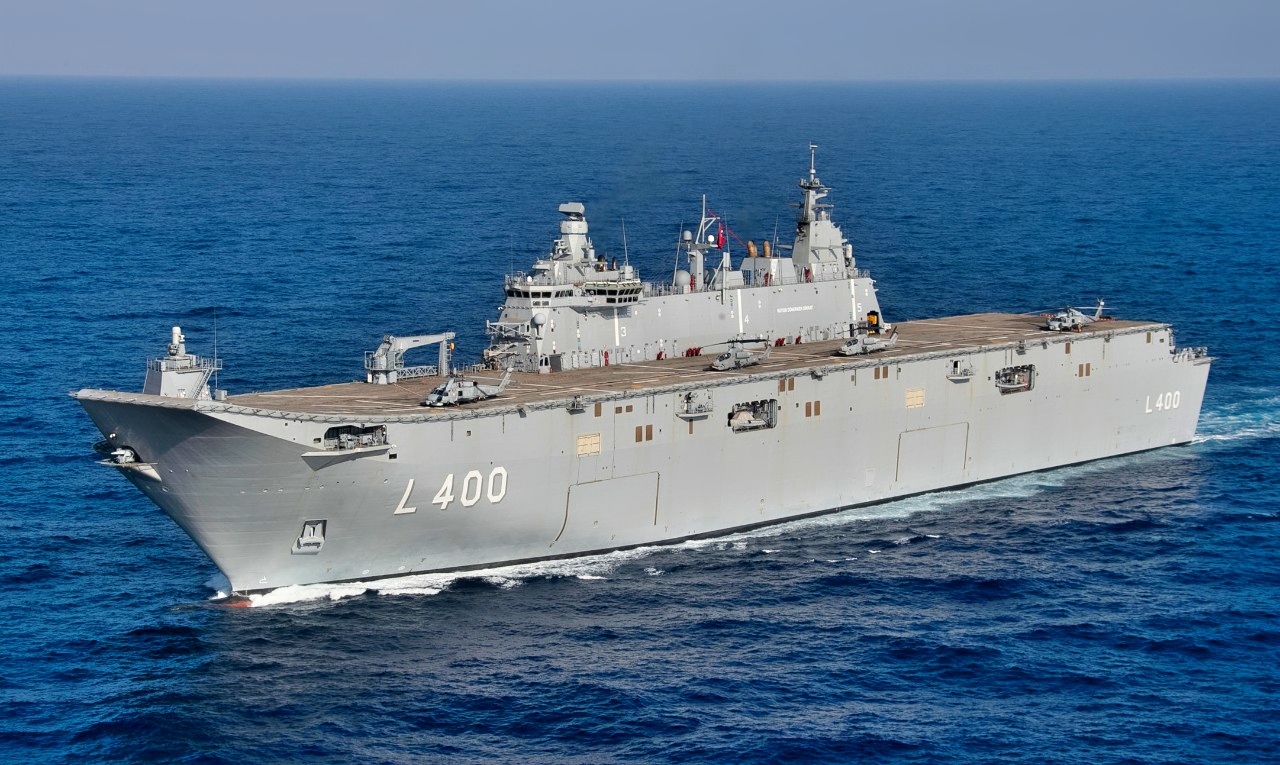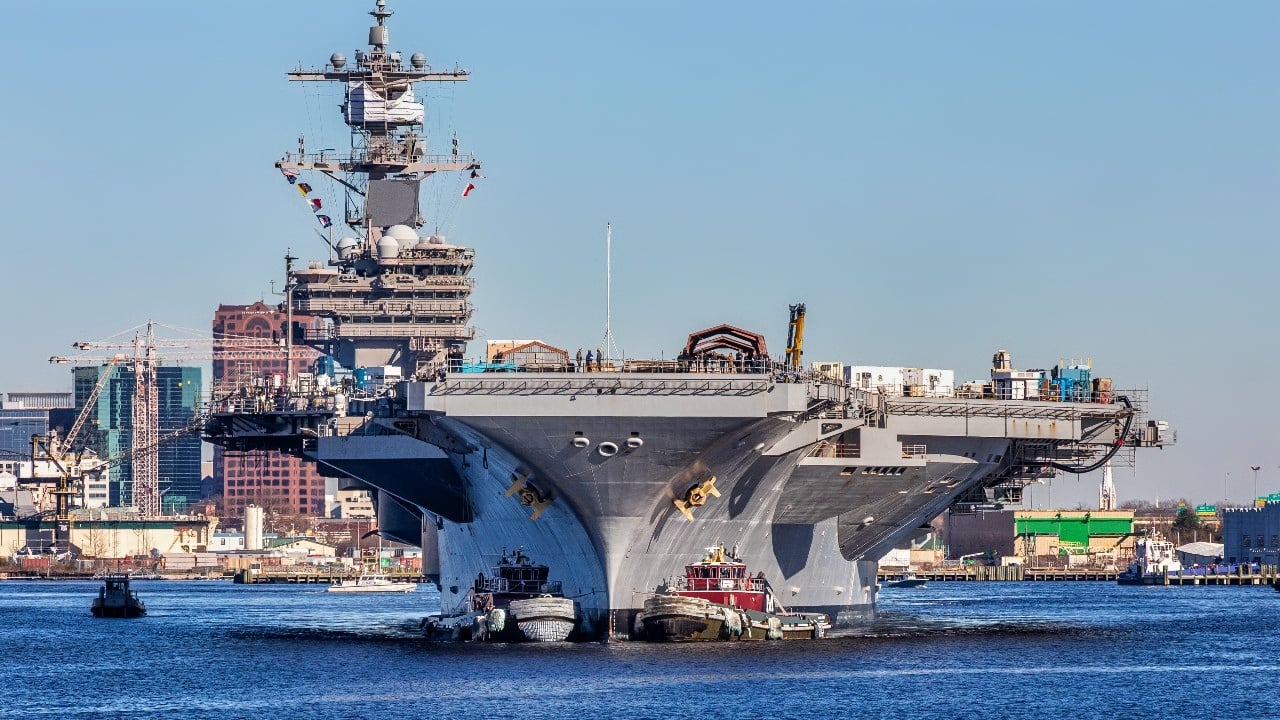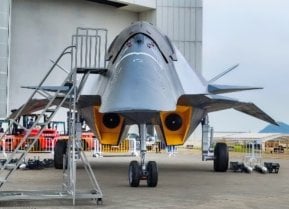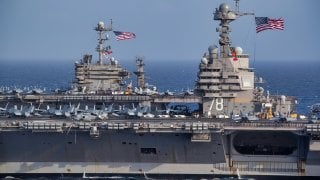The U.S. Navy's Aircraft Carrier Nightmare Explained in 2 Words
The U.S. Navy’s commitment to building expensive Ford-class aircraft carriers, each costing over $12 billion, contrasts sharply with nations like Turkey and Iran, which have developed far cheaper alternatives such as the TCG Anadolu or converted freighters.
Too Expensive: The U.S. Navy’s commitment to building expensive Ford-class aircraft carriers, each costing over $12 billion, contrasts sharply with nations like Turkey and Iran, which have developed far cheaper alternatives such as the TCG Anadolu or converted freighters.

-Critics argue that while nuclear-powered supercarriers are unparalleled in their versatility, their relevance in an era of unmanned aerial systems (UAS) and asymmetric threats is increasingly questionable.
-With carriers becoming massive targets in future conflicts, it raises doubts about whether the U.S. should continue investing heavily in this Cold War-era concept or pivot to more innovative and cost-effective solutions.
The U.S. is Spending Billions on Aircraft Carriers – Others are Doing it Far Cheaper
This week, HII announced that its Newport News Shipbuilding division will begin the "concurrent assembly" of two different Gerald R. Ford-class nuclear powered aircraft carriers, with both being built in the same dry dock. The Ford class flattops will begin to replace the aging Nimitz-class aircraft carriers on a one-for-one basis.
"The dual construction of Enterprise (CVN 80) and Doris Miller (CVN 81) is enabled by the successful implementation of the CVN 80/81 two-ship contract modification awarded in 2019 and modifications made to the dry dock by NNS with investment by HII and the U.S. Navy," the company explained.
The goal of this effort is to streamline the production of the two carriers, while saving taxpayers a few dollars in the process. However, the concurrent assembly has received mixed feedback from the carrier industrial base, which worries it could result in rushes for components followed by lengthy waiting periods for new contracts.

Aircraft Carriers as Pricey Warships
Moreover, the fact remains that each of these carriers will still cost in billions of dollars to build them, billions more to maintain them during their respective service lives, and at least hundreds of millions for each to be dismantled in roughly five decades at the end of their service lives.
Other countries have also spent billions on carriers, so the United States is far from alone – or is it?
Turkey's new flagship, TCG Andolu, which can operate as a drone carrier cost a reported $1 billion. Yet, that seems like a bargain compared to the more than $13 billion spent on the USS Gerald R. Ford (CVN-78).
The price tag for the future USS Enterprise (CVN-80) is expected to come in at around $12.8 billion, provided there are no unexpected surprises along the way. The cost of the future carriers will likely only increase over time.

Are They Worth the Cost?
Aircraft carriers were once something only major powers could operate, but in recent years, some countries have looked to lower the costs. Iran even converted a freighter into a de facto carrier. Now its capabilities are limited, and it likely wouldn't last long in a fight – yet it highlights that what defines a carrier hasn't changed much in the past century.
All an aircraft carrier really requires is a way to launch and recover aircraft.
That has typically included a large flight deck. Yet, as The Washington Institute reported this week in a new study, the pro-Iran Saraya Awliya al-Dam militia based in Iraq recently demonstrated that it was able to launch a Iran-made Shahed-101 X-tail drone from a 15-foot motor boat!
It would be ridiculous to call the rubber boat an aircraft carrier, but it is an example of innovative thinking when it comes to asymmetric warfare. It was that same innovative thinking that allowed Hamas to carry out its brutal attack on southern Israel on October 7, 2023, where the militants employed paragliders to breach the border from Gaza.
Rubber boats able to launch drones are a threat that shouldn't be underestimated. Nor should a modern carrier be seen as invincible! A drone might not sink the larger flattop, but it could still cause millions of dollars of damage.
Stuck In The Past?
Supporters of the nuclear-powered carriers will say it can still do what no other warship can – both in peacetime and in a conflict. Yet, the questions must be asked when it is so increasingly apparent that unmanned aerial systems (UAS) are the future that the U.S. Navy is once again sticking with large vessels that are clearly from the past?
Nuclear-powered supercarriers made sense in the Cold War, and proved invaluable during the Global War on Terror (GWoT) – but are they well-suited to the changing reality of the 21st century where the U.S. could find itself engaged in a conflict with a near-peer adversary? What about those asymmetrical threats?
This isn't to say that the U.S. Navy doesn't need carriers, but does it need nearly a dozen super expensive warships that could massive targets in a future conflict, and cost billions to replace?
We need only remember the times an expensive carrier was "sunk" in a wargame by a diesel-electric submarine, or that China has developed carrier-killer missiles – and more importantly, the fact remains and adversary only has to get lucky once.
Author Experience and Expertise: Peter Suciu
Peter Suciu is a Michigan-based writer. He has contributed to more than four dozen magazines, newspapers, and websites with over 3,200 published pieces over a twenty-year career in journalism. He regularly writes about military hardware, firearms history, cybersecurity, politics, and international affairs. Peter is also a Contributing Writer for Forbes and Clearance Jobs. You can follow him on Twitter: @PeterSuciu. You can email the author: [email protected].
Image Credit: Creative Commons and/or Shutterstock.
From the Vault


